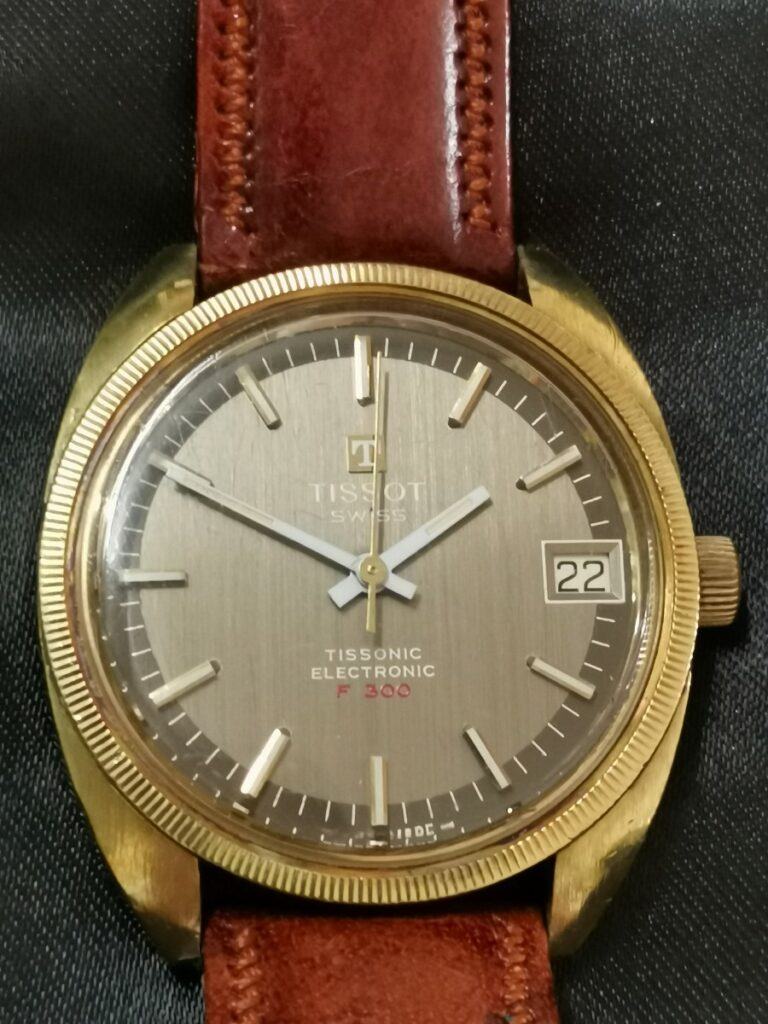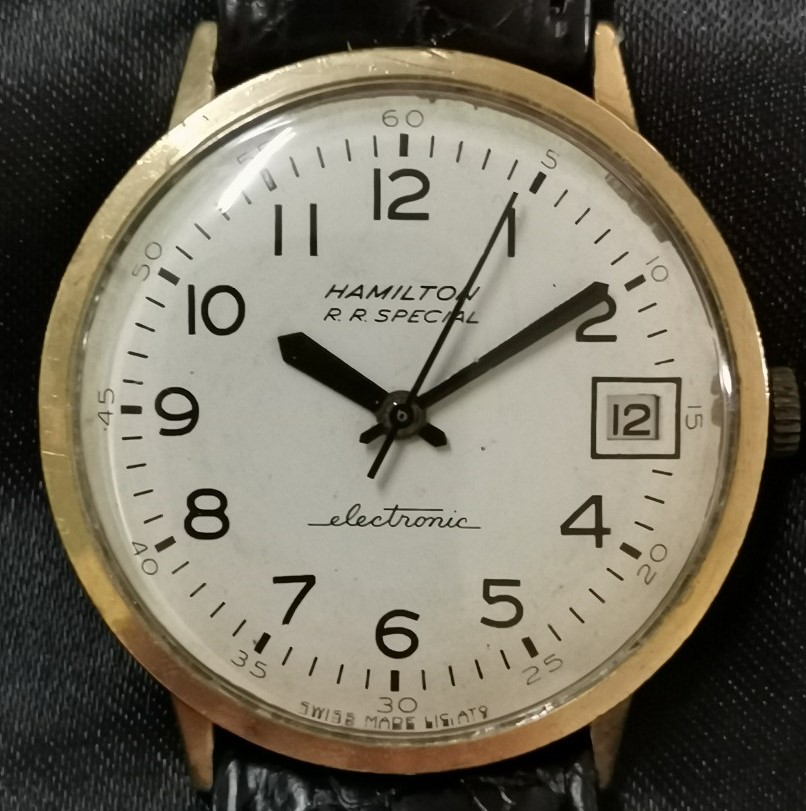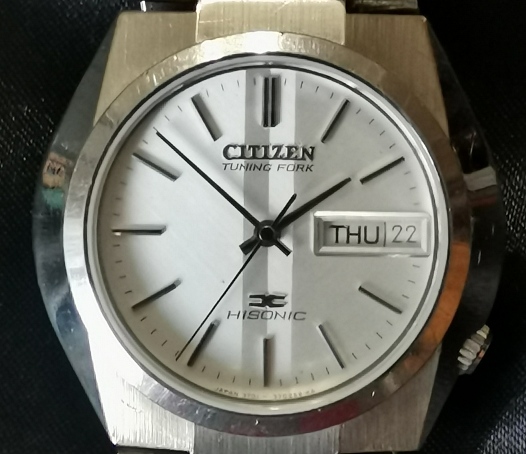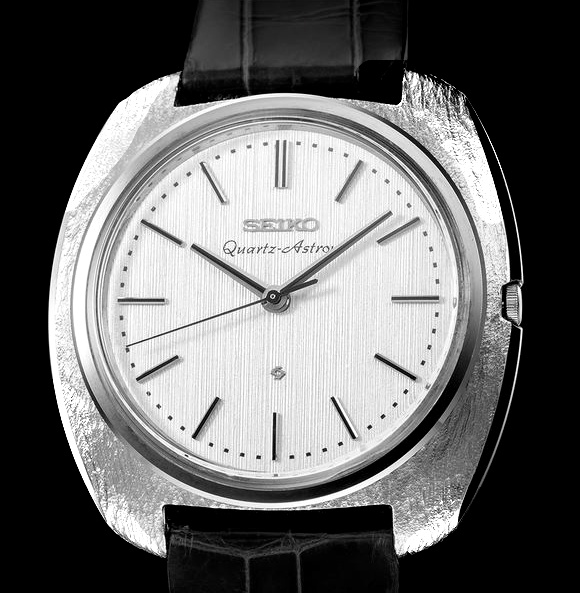Post 1960 the world was changing it was a time of freedom and a time of technological development. The race for space was on and watches were there.


Electric Watches
The electric-watch refers to first-generation watches that were powered by batteries. The first models were introduced in 1952 by Lip and Elgin in a laboratory setting.
Hamilton (an American manufacturer) would be the first company to manufacture an electric-watch for sale in 1957.

The timekeeping element in an electric-watch was a balance wheel or a tuning fork that was driven electromagnetically by a solenoid powered by a battery.
The hands of these watches were then driven mechanically through a more traditional wheel-train.
Bulova introduced the Accutron watch in 1960 with a 360 Hz tuning fork instead of the traditional balance wheel as the timekeeping element. The movement was invented by Max Hetzel a Swiss born horologist who joined Bulova in 1948.
The tuning fork was a second-generation electric watch. The Hamilton Electric released in 1957 is an example of a first-generation electric watch.

Instead of a “ticking sound” made by mechanical watches the Accurton emits a faint high-pitched hum, which comes from the vibrations of the tuning fork. They are very distinctive and known by that hum.
Many brands adopted the tuning fork movement for their own.
They are a forerunner of quartz watches which would also use vibration to increase the accuracy of time measurements. The Accutron was guaranteed to lose no more than two seconds per day, or 1 minute per month, much better than comparable mechanical watches of the time.
Quartz Watches
In 1958 Seiko requested that their subsidiary company Epson create a portable quartz watch code named project 59A. By the 1964 summer Olympics in Tokyo Seiko had a working prototype that was used to time all the events.

Seiko first brought a quartz watch to the market in 1969 with the 35 SQ Astron, which was available for the Christmas season in 1969.
It was claimed as the world’s most accurate wristwatch to date.
The development of quartz technology was through the combined efforts of Japanese, American and Swiss companies.
This meant that nobody could patent the technology as a whole and allowed rapid development of the quartz industry.
This allowed other manufactures to rapidly implement their own designs and models and bring them to market. The quartz craze was on, with many high-end manufacturers producing their own models as well. The quartz revolution ended the dominance of over 100 years of the mechanical watch industry in less than a decade of sales.
Quartz technology revolutionized the watch industry. A quartz watch uses a quartz crystal resonator which vibrated at 8,192 Hz and was driven by a battery powered oscillator circuit.
Traditional balance wheel watches oscillated at 5 beats per second, attached to a wheel train which adds up the beats into seconds, minutes and hours.
Quartz watches used digital counters in place of the wheel train. This along with the elimination of the moving parts of the wheel train made quartz watched more shock-resistant and more accurate than their mechanical counterparts of the day. Quartz watches also do not require periodic cleaning and lubrication, (servicing).
Pulsar developed the first digital electronic watch with an LED display in 1970. It had red numerals. Omega joined the quartz revolution in 1974 with an Omega Marine Chronometer. This was the first quartz watch to be certified as a Marine Chronometer. It was said to be accurate to 12 seconds per year.
Accuracy in quartz watches increases with the frequency of the crystal used, but power consumption also increases with higher frequency.
The first generation had frequencies of a few kilohertz which was a limitation on accuracy. Second generation quartz watches utilized CMOS logic and LCD screens to increase battery life. These innovations allowed the crystal frequencies to be increased to 32,768 Hz allowing accuracy of +/- 5 to 10 seconds/month.
These innovations and the low prices of quartz technology resulted in one of the worst periods of the mechanical watch industry. Production of quartz watches shifted to the Far East, which resulted in even lower prices.
More advances were to come, in 2010 Miyota (Citizen) of Japan developed a quartz movement using ultra-high frequency of 262,144 kHz. This movement had accuracy levels of +/- 10 seconds/year. The second hand also had a smooth sweeping movement instead of the traditional quartz tick.
In 2019 Citizen announced a quartz watch that was accurate to +/- 1 second/year. They achieved this using an AT-cut crystal oscillating at 8.4MHz (8,388,608 Hz). The watch maintains it’s accuracy by monitoring and adjusting for frequency and temperature every minute.
From here we move on to radio controlled watches, Atomic watches and finally smart watches. The quest for greater and greater accuracy never ends.
